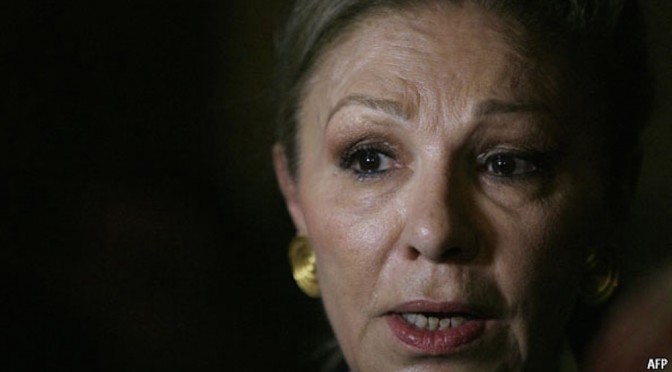Iran’s former empress
A royal comeback?
Aug 22nd 2012, 19:41 by The Economist online | TEHRAN
Iran’s former empress
A royal comeback?
Aug 22nd 2012, 19:41 by The Economist online | TEHRAN
She married the shah, Muhammad Reza Pahlavi, after his previous wife turned out to be barren. She gave him the heir he craved, tolerated his philandering and became a model of the stylish, tirelessly charitable Middle Eastern consort. The 1979 revolution in Iran sent the couple into exile, where the shah died a year later; since then, his widow has been vilified by the Islamic Republic as an accomplice in tyranny. But now, in her 75th year, Farah Diba may be starting a comeback.
On July 26th, a popular London-based TV satellite station called Man o To (Me and You), best-known for adapting Western formats to Iranian audiences, broadcast a long documentary based on conversations with the former empress. “From Tehran to Cairo”, as the programme is called, tells the story of the royal couple, from their flight until the shah’s death from cancer in the Egyptian capital, where Egypt’s then president, Anwar Sadat, was the only leader to behave generously to an old ally. The day after the broadcast, the chatter in Tehran was of little else.
From the rumble of approaching revolution to the royal flight and a humiliating odyssey in search of a refuge, the programme made for affecting television. Far from the immoral hedonist of caricature, the empress came across as a loyal patriot and spouse. “Such dignity!” was the reaction of one tearful viewer. “It shows how much she loves the country and how much she’s been maligned!”
The programme had some pointed messages. It claimed that the shah did not, as his detractors have it, spirit untold billions out of the country. The empress puts the amount that reached her and her children after his death at a relatively modest $50m. The shah of his widow’s depiction was a devoted servant of his people. And her references to her son as Crown Prince Reza, now resident in America, reminded viewers of a possible alternative to Iran’s current rulers.
To judge by responses on the internet, she struck a chord. One young woman confessed regretfully that she had played the role of “Evil Queen Farah” in a school play. Another, a student at the women’s university that the empress founded (her name since expunged), paid tribute to her promotion of Persian culture. There was pathos, too, since the ex-queen has lost two of her four children to suicide in the past 11 years.
Would Iranians welcome back the monarchy they booted out 33 years ago? Many inside the country regret what has taken its place, but the empress unsurprisingly failed to acknowledge the corruption and despotism that marked the shah’s rule. The vision she put forward, of a tolerant Iran standing high in the world’s esteem, still seems distant indeed.
